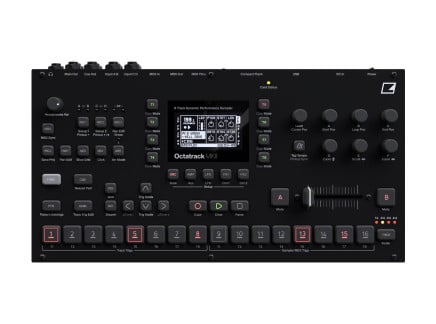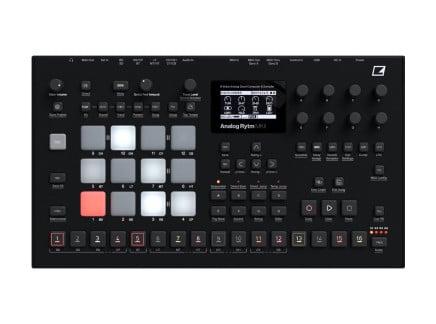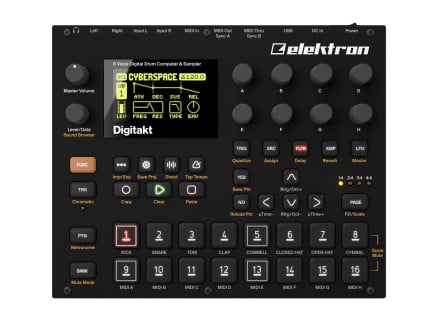At Superbooth 2019, Elektron unveiled the newest machine in their line of sequencer-driven madness. We welcome the Digitone Keys, an eight-voice polyphonic FM synthesizer. Driven by the same engine as the Digitone, the Digitone Keys expands the scope of the synthesizer via its addition of a 37-note keybed replete with extended control options. The keyboard offers velocity sensitivity and aftertouch while eight user-assignable encoders provide players direct access to the most important synthesis parameters, making it easily possible to sculpt sounds in real time without getting buried in a screen. A set of performance buttons allows users to access special functions of the keyboard itself, from arpeggiation and one-note chord building to a split mode in which different patches can be assigned to different ranges of the keyboard.
Because we’re only one year removed from the release of the Digitone, we reached out to Simon Mattison, the designer of Digitone's synthesis engine, so that he could tell us some of his thoughts and inspiration toward the synthesizer and relate any insight he’d like to share about the intentions of Elektron’s newest instruments.
Elektron has been a leading light in the world of instrument creation ever since the release of the Machinedrum in 2001. Ever since, they have continued to challenge themselves in a myriad of exciting ways, constantly shapeshifting between releases to tap into the core of what the modern electronic musician is wanting.
It is because of this clear passion that Elektron machines have become so ubiquitous. If one views any live set by a contemporary rhythm and bass musician, the viewer is more than likely to spot an Elektron box (or two) present among the musician’s gear. This nigh omnipresence is reflected in Elektron’s ethos of making “Electronic Instruments, for Electronic Music.”
They Listen
What sets Elektron apart as instrument designers is the clear influence and direction they take from dance musicians. This conversation between their team of designers and the larger dance music culture provides them an unusually firm grasp on the pulse of our constantly shifting, ever-morphing, effervescent zeitgeist of a culture.
One of the keys to their success is their company's youthfulness, which allows both a sense of agility and flexibility. Their experience allows them to manage top-level manufacturing and build quality, and their relative youth allows them the benefit of hindsight, so that they don’t repeat the mistakes of other larger-scale synthesizer companies. These qualities are coupled with a restlessness and knack for experimentation that shines through their instruments.
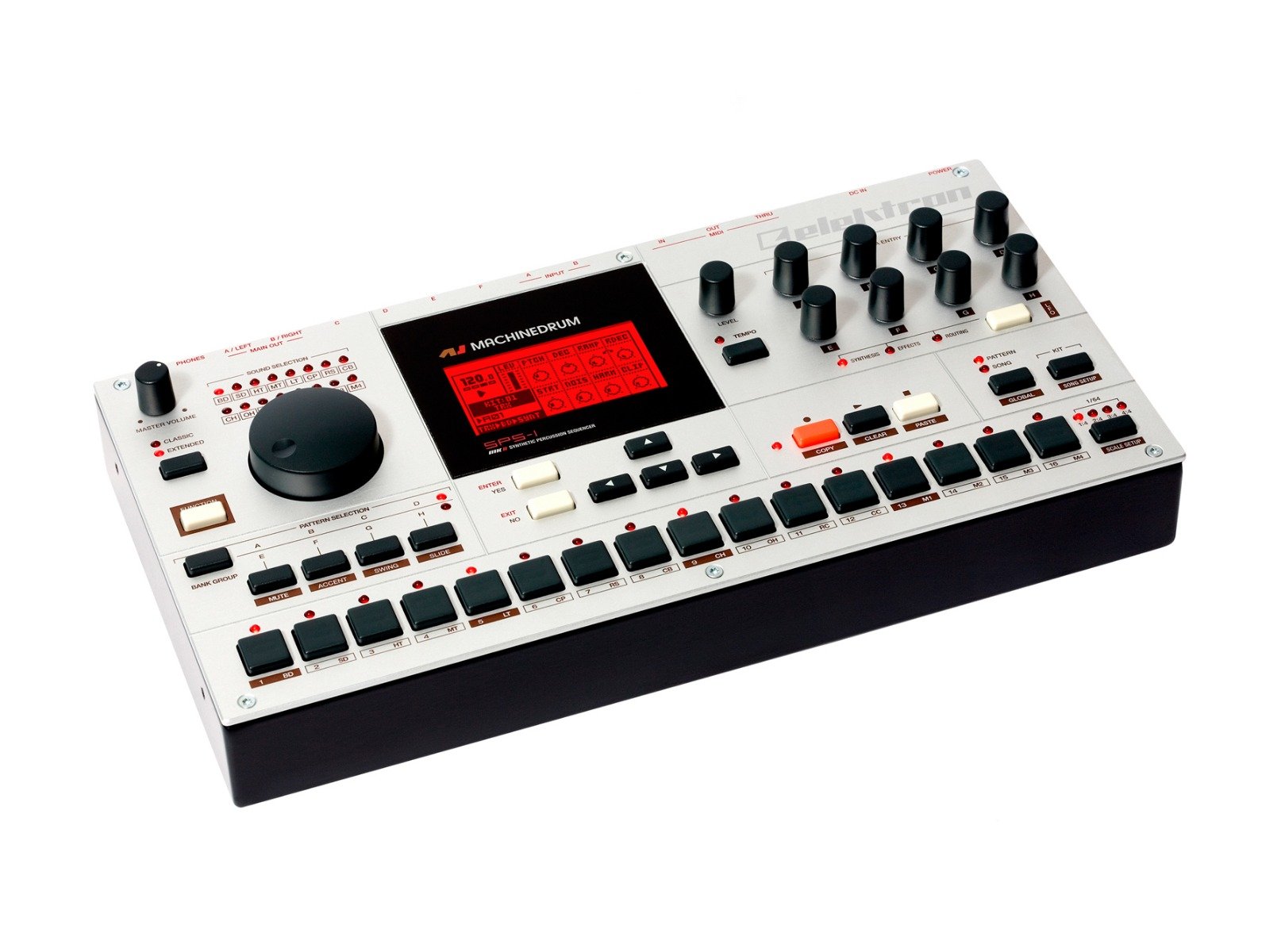 Elektron's first foray into Parameter Locking
Elektron's first foray into Parameter Locking
And yet, they keep improving. Most companies have one flagship product that they build their renown upon. Elektron, though, has several such products. The Machinedrum and the Octatrack both represent milestones in electronic instrument design. The Machinedrum’s introduction of parameter locks created an entirely novel approach that stressed sound design through the sequencer. This concept served to catapult Elektron into ubiquity.
Perhaps the clearest evidence of this is the appropriation of the name of the instrument into the moniker of Travis Stewart. Stewart not only extols his admiration of the company through the text on the spines of his records, but nurtures his own contributions to the machine’s credibility through his own high level of critical acclaim over the last decade. This is not to mention the invaluable support of Autechre, who used both Machinedrum and The Monomachine through many of their most acclaimed periods. These are just a couple of examples taken from a plethora of high profile Machinedrum users, but lest we be here for 200 more pages we have to move on.
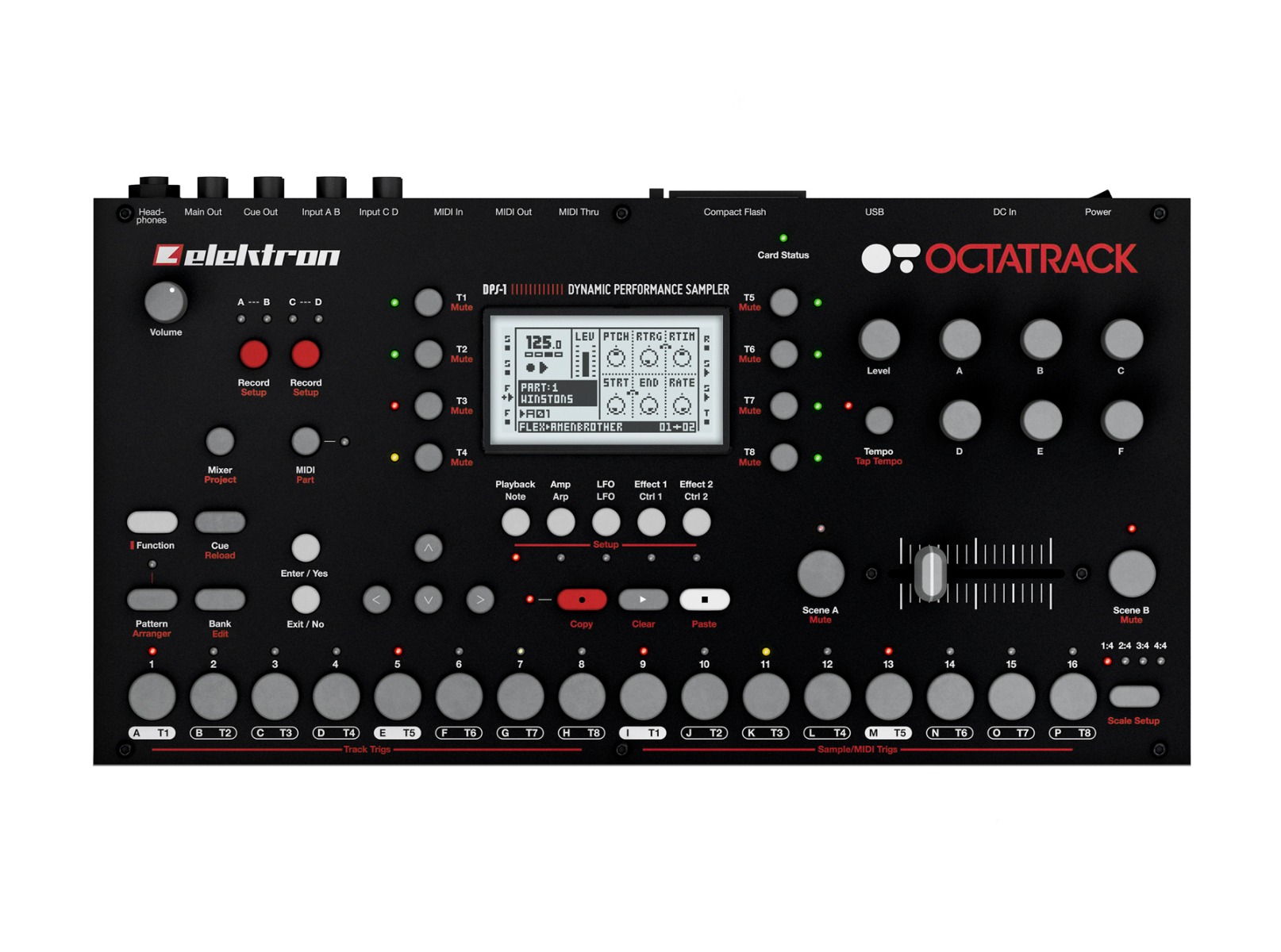 Elektron's entrance into the sampling canon
Elektron's entrance into the sampling canon
Next we come to the Octatrack. I don’t think it’s any stretch of the imagination to say that it would be difficult to imagine modern dance music without it. Released in 2011, the Octatrack quickly became a cornerstone instrument in the creation of electronic music. One look at any notable users list will quickly surface too many names to sort through. It's an incredible machine whose express intention was to redefine the sampler and to position itself as an ultimate performance tool.
The Octatrack accomplishes this task in spades. Featuring eight tracks of sampling, four inputs, four outputs, an eight-track MIDI sequencer and live effects processing, the Octatrack is a behemoth of a machine.
As if that wasn’t enough, the Octatrack features a stunning elaboration on Elektron’s P-Locking scheme: the scene function. Perhaps the most defining physical feature of the Octatrack is its crossfader, which allows the user to smoothly morph between two completely independent scenes of parameters. This smooth interpolation of settings allows for massive changes in the machine’s sound, perfect for creating unforgettable moments within one’s live set. No other machine in recent memory has had a singular feature so definitive that ithas become almost as famous as the machine itself. This ubiquity and esteem, is why I feel that in the near future the Octatrack will be mentioned in the same breath as an E-Mu SP-1200, or an Akai MPC 2000: an ultimate example of the sampler.
With a track record like theirs, it becomes easy to get excited about Elektron's future But to know where to go, you have to know where you’ve come from; and Elektron as a company has shown that it is well in tune with its past.
Impose Character
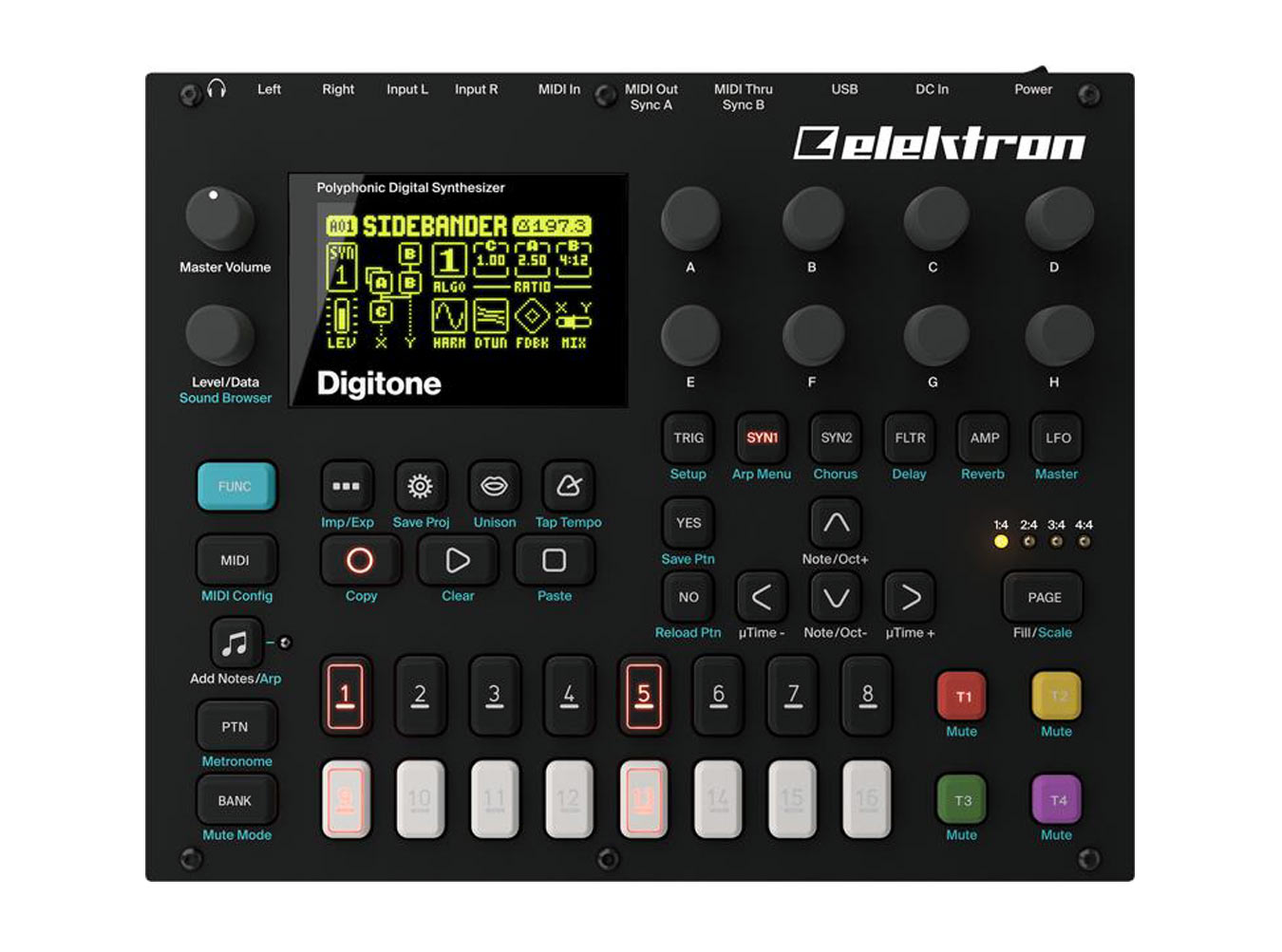 A Synthesizer that would redefine FM synthesis
A Synthesizer that would redefine FM synthesis
At NAMM 2018, Elektron released somewhat of a sleeper hit. Initially seeming to be a variation of the Digitakt, the initial impressions of The Digitone were somewhat mixed. Multiple news outlets were stoked about the synthesizer’s new take on FM, and praised its intuitiveness, but FM has a lot of baggage...and a new FM synthesizer entering the market seemed like a strange choice to a group of people who never quite clicked with Yamaha’s interpretation of John Chowning’s synthesis model.
Thankfully however, skeptics were proven wrong when the Digitone won overwhelming acclaim. The machine would soon become Elektron’s newest hit. Focused on a radical reconfiguration of the traditional FM synthesis model, the clarity of its sound and the kinetic implementation of their famous sequencer, The Digitone found its way into the hearts (and studios) of some of the most famous electronic musicians in the world. Below is an excerpt of a conversation with Simon Mattison, the designer of The Digitone’s synthesis engine, about some of the thoughts and inspirations that went into creating the synthesizer. *Note that some editing has taken place for spelling and clarity.*
Perfect Circuit: What did you envision people making with [the Digitone]? What kind of character or reputation do you wish for the machine? What was your general inspiration for the design of the synthesis engine and the tonal character?
Simon Mattison: Hi! Hmm what do you mean exactly?
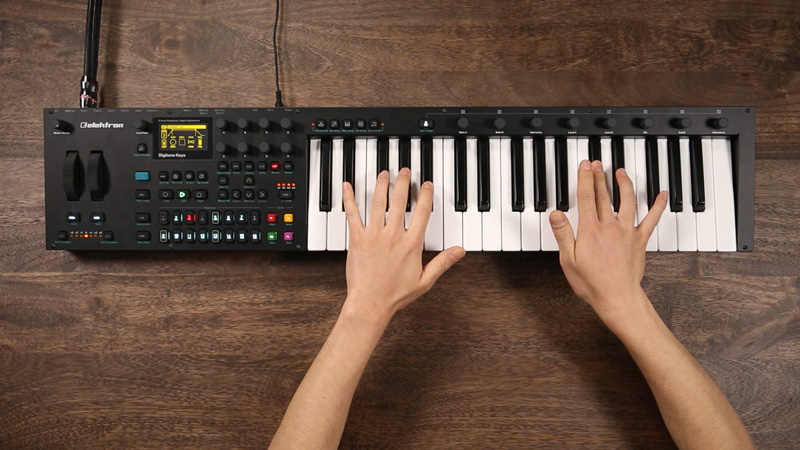
Simon Mattison: Well, FM is a type of synthesis that allows you to make a very broad palette of sound. I would like for people to see FM in a new light. Since the design of the synthesis engine more or less breaks a lot of conventions in FM I envison that artists use it in a way that moves away from what has been typically regarded as sounding “FM” and find new, more explorative ways, to express themselves.
SM: Through and through it’s very much designed to be used in an “explorative” manner, just like for example an analog synth. Turn a knob and something happens. This has not been the case with most FM synths, as many configurations could lead to just silence or very unexpected noises etc. In regards to the character of the instrument, I see it as being so clean that you can impose character yourself, and with such a precise method of sculpting timbre I think that is quite possible. I keep hearing new stuff done with it and I keep exploring it myself really.
SM: Lately I’ve been on this kick of making sounds on the Digitone that are really way out of what you would think it does. For me that’s part of the charm with FM, so much of it is up to the user to define the sonical outcome by using just the means provided. Sure, it’s a more narrow scope timbrally, compared to a matrix routing FM synth, but that's not the point of it anyway. The was to make an FM synth that you could use in this explorative/intuitive manner, and I think we succeeded.
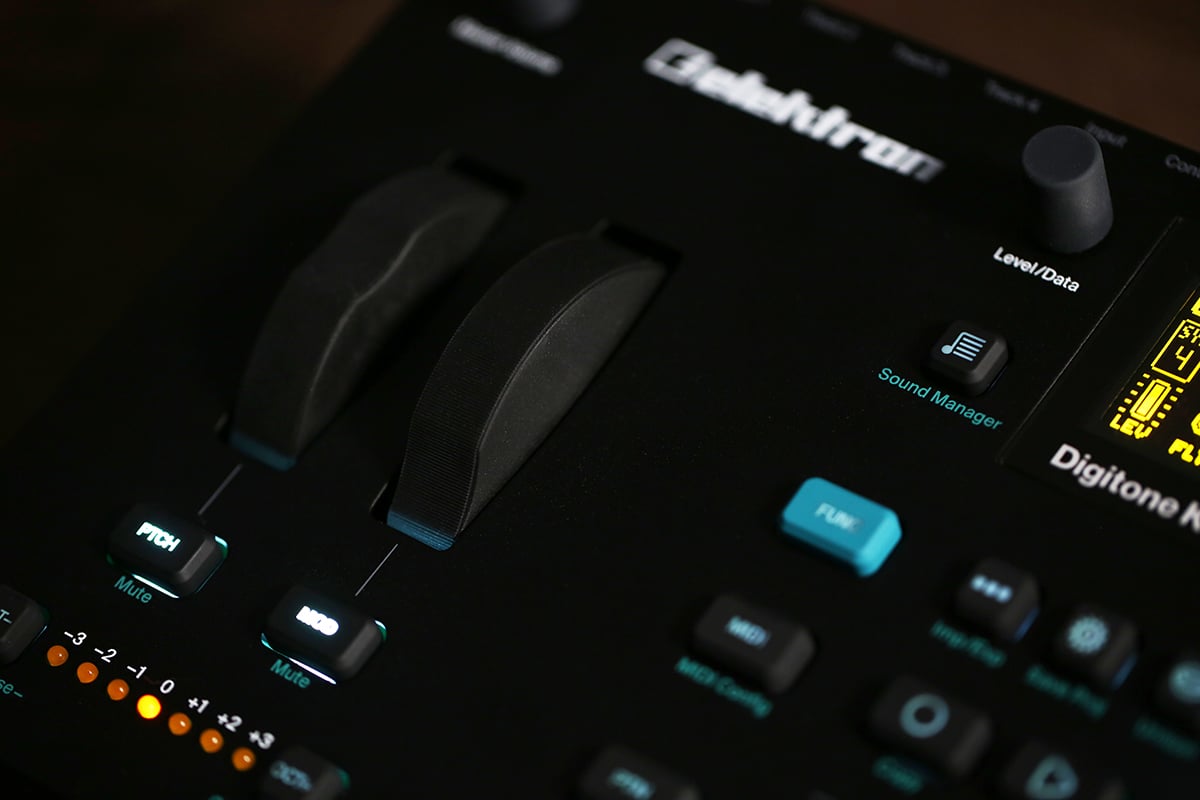
SM: The inspiration for it simply comes from many years of primarily using FM synthesis as my go-to way of making sound. And in that process sort of figuring out what I like or dislike about certain parts of popularized FM designs. For me, I’ve always loved the sound but found that most of the parameters in FM synths are really quite superfluous, especially for the type of sounds the electronic music community wants to do. It’s important not to forget that FM as we know it, that Yamaha designed, is not the definitive method, it’s just an implementation; just like ours is. Their goal was to be able to make almost any sound feasible with the method, and with somewhat of an emphasis on reconstructing familiar sounds such as acoustic instruments etc.
SM: When we sat down with the first concept for The Digitione we all agreed that there really is no need to be able to replicate a perfect trumpet, electronic music has grown into its own since then and we set out to make an electronic instrument for electronic music and that's the core of it.
Looking Forward
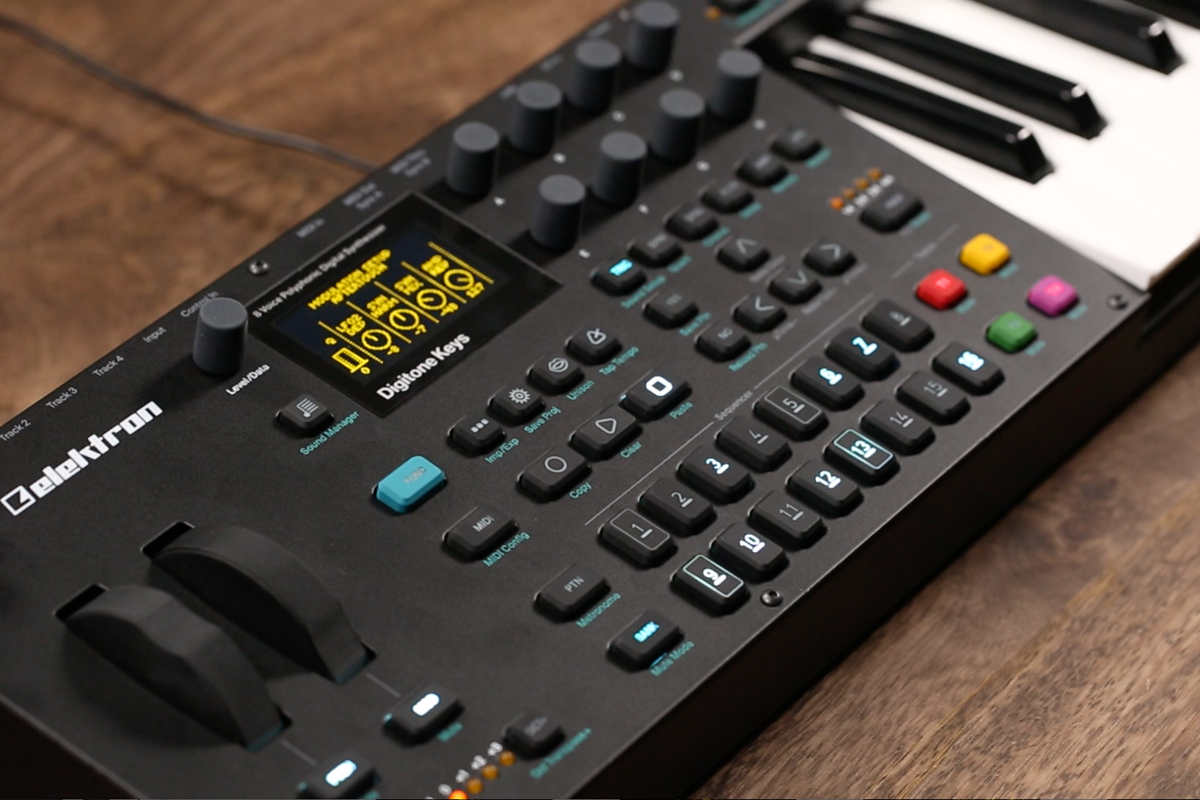
Thus, we welcome the Digitone Keys, another brick in the road of Elektron’s journey. Propelled by the same guts as the Digitone, the Digitone Keys elaborates the original design into a friendlier interface via its inclusion of a chromatic style keyboard, as well as multiple additions to its panel design that allow for greater performability. My favorite new feature is the eight performance encoders located above the keyboard, all of which are user-assignable to any parameter of the synthesizer.
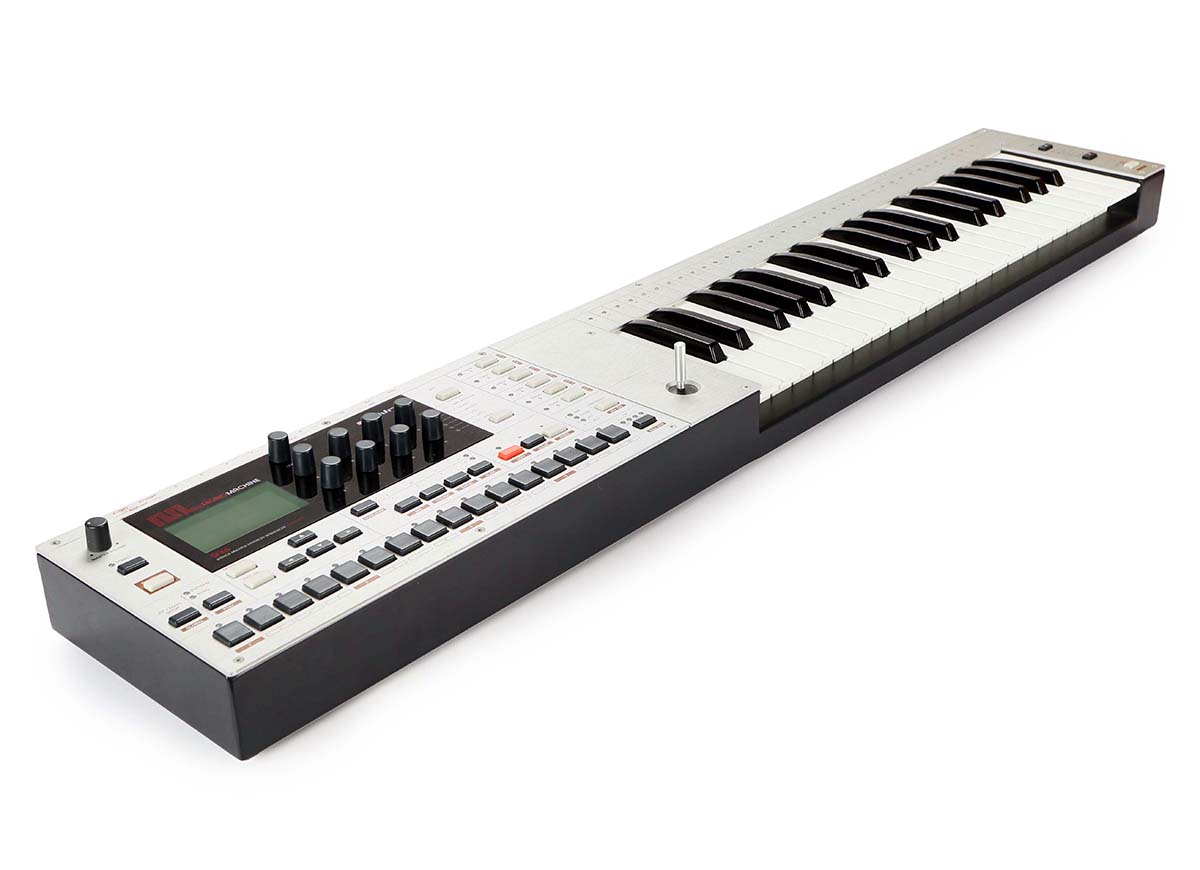 The original Monomachine, released in 2004
The original Monomachine, released in 2004
The Digitone Keys takes clear inspiration from Elektron’s past in that they use the same side-addressed paneling that was present on the original Monomachine. This begs a lot of interesting questions, as the stated intention of the Monomachine at the time was to allow for the inclusion of two players of the instrument. While this intention may or may not have transferred to the Digitone Keys, I’m pleased about this design choice for seperate reasons. I believe that the horizontal skewing of the instrument is very helpful in performance scenarios. I cannot count the amount of times I’ve ran out of space for my instruments because my keyboard has taken up all of the vertical real-estate of my table. Having a slightly wider profile gives the artist room for their other gear, which is honestly sometimes the first thing I think about when deciding whether or not an instrument will stay as a studio piece. The Digitone Keys has also added a stereo output for each track, giving the much needed option of individual track treatment to tide us over until OverBridge 2.0 is upon us. Additionally the instrument includes input control options which can be scaled for use with incoming control voltages from modular synths. This gives Digitone Keys another layer of control and integration into the musicians larger studio setup.
Also on display are a set of keyboard-specific functions such as portamento, an arpeggiator, and a chordal function. Each of these allow for more flexible access into an incredibly vast machine. This to me represents an invaluable attempt toward accessibility for keyboardists. Elektron’s sequencer, though revolutionary, has a degree of infamy in regards to its learning curve. It’s nice to see the company recognize that and make attempts to universalize its interface. The Digitone Keys can generate sound completely independent of the sequencer, allowing keyboardists to focus on their playing rather than prodding through menus. And of course, the inclusion of keyboard velocity and aftertouch provides an uncommonly expressive playing experience, bringing even greater opportunity for instrumentalists to dive into the previously impenetrable universe of FM synthesis.
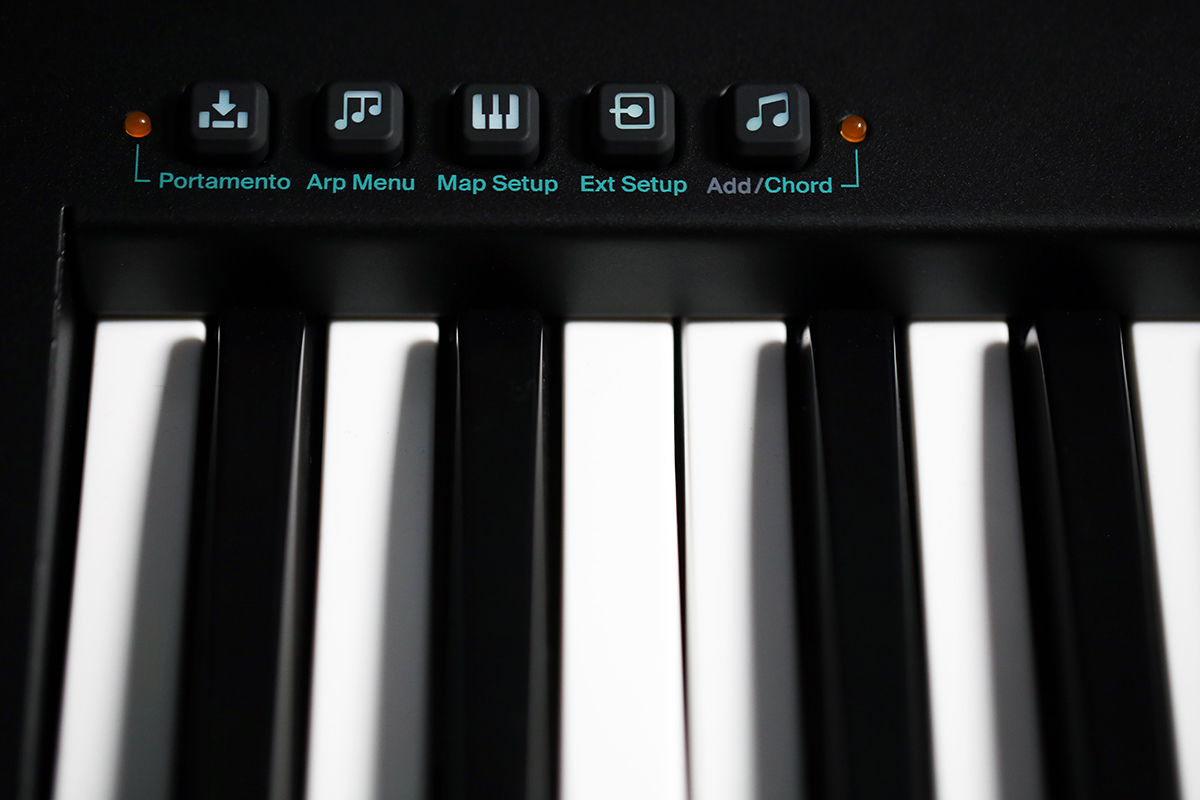
I think what strikes me the most about Digitone Keys is the time that Elektron took in questioning the accessibility of its instrument. The Digitone is an incredible synthesizer, but a common complaint about any sequencer-driven tonal instrument is that creating momentum via melody, chord progression etc. can be a little difficult. Though keys are not a full solution to this problem, I maintain that they are at least a strong step forward in the process of addressing those concerns.
With the Digitone Keys, Elektron embraces a forgotten paradigm found in its own history, and I believe this can be taken as a sign that they constantly keep an invaluable critical eye on their own past. The Digitone Keys distinguishes itself by simultaneously embracing its roots and carving a new path for itself—providing a new perspective on a much loved instrument and bringing it into the hands of an entirely new audience.

